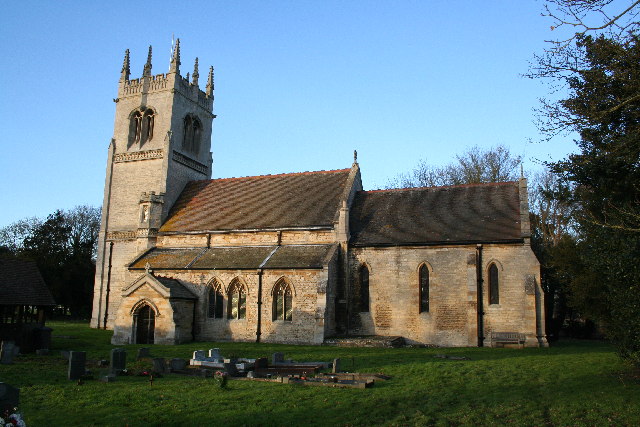William Bury (Roundhead) on:
[Wikipedia]
[Google]
[Amazon]
Sir William Bury (‚Äď1669) fought for the Parliamentary causes during the English Civil War and was a colonel in the New Model Army during
 Sir William chiefly resided at Cistersia Place (also known as the Friars), in Grantham, until sent to Ireland, and on his return took up his abode at Linwood Grange, in
Sir William chiefly resided at Cistersia Place (also known as the Friars), in Grantham, until sent to Ireland, and on his return took up his abode at Linwood Grange, in
Interregnum
An interregnum (plural interregna or interregnums) is a period of discontinuity or "gap" in a government, organization, or social order. Archetypally, it was the period of time between the reign of one monarch and the next (coming from Latin '' ...
. He was also a Member of the First Protectorate Parliament, and held various Commonwealth
A commonwealth is a traditional English term for a political community founded for the common good. Historically, it has been synonymous with "republic". The noun "commonwealth", meaning "public welfare, general good or advantage", dates from the ...
government offices.
Biography
Bury was only son of William Bury (died 28 March 1617), of the Friars, in Grantham, Lincolnshire, and Emma, his wife, the youngest daughter of John Dryden, of Canons Ashby, and Elizabeth (''n√©e'' Cope). He was baptised at Grantham on 3 June 1605. Bury entered at Gray's Inn on 18 May 1631. He was found guilty of High Treason for taking up arms against King Charles I, April 21, 1643 (see Declaration of Lex Talionis). The same year he had been appointed to collect subsidy from Lincolnshire, He was named in despatches of the Committee of Both Kingdoms 1644‚Äď1645, and was one of the commissioners for the reduction of Belvoir Castle in June 1649. Bury was returned Member of Parliament for Grantham in First Protectorate Parliament (called 27 July 1654), and the same year was appointed a colonel in the New Model Army. The next year, on 1 November 1655, he was appointed to the Trade Committee, and on 1 August 1656 he was appointed a Commissioner for Ireland. While in Ireland he was knighted at Dublin Castle by Henry Cromwell on 21 July 1658. cites Metcalf's ''Book of Knights'', p. 215. (this honour passed into oblivion with the Restoration in May 1660). On 26 January 1661 (after the Restoration), was knighted at the hands of Sir Maurice Eustace, Lord Chancellor of Ireland, Roger, Earl of Orrery, and Charles, Earl of Mountrath, Lords Justices. Sir William chiefly resided at Cistersia Place (also known as the Friars), in Grantham, until sent to Ireland, and on his return took up his abode at Linwood Grange, in
Sir William chiefly resided at Cistersia Place (also known as the Friars), in Grantham, until sent to Ireland, and on his return took up his abode at Linwood Grange, in Blankney
Blankney is a village and civil parish in the North Kesteven district of Lincolnshire, England. The population of the civil parish at the 2011 census was 251. The village is situated approximately south from the city and county town of Linco ...
. It was there he died and he was buried in Blankney Church on 20 July 1669.
Family
At Grantham, on 13 April 1629 (while he was still a student), Bury married Jane (born 1616), daughter of Sir William Plomer, of Radwell, Hertfordshire, and Hill, Bedfordshire. Bury married, secondly, around 1650, Jane, daughter and coheir of George Ellis, of Wyham-on-the-Hill, Lincolnshire, who survived him and was buried in Blankney Church on 22 April 1677. Besides a number of children who died in infancy, Bury and Jane his first wife had two sons and three daughters: # William, who succeeded to the Grantham property and died 1678, was a barrister of Gray's Inn, but never a knight, although so styled upon the monument at Grantham. He married Dorothy, daughter of Periam Docwra, of Putteridge. William Bury's last male descendant died 1707. # John, ofHacketstown
Hacketstown (, IPA: ąbň†al ≤…ôňąhaceňźd ≤, historically known as Ballydrohid (), is a small town in County Carlow, Ireland, near the border with County Wicklow.
It is located on the R747 regional road at its junction with the R727. The R ...
, County Carlow
County Carlow ( ; ga, Contae Cheatharlach) is a county located in the South-East Region of Ireland, within the province of Leinster. Carlow is the second smallest and the third least populous of Ireland's 32 traditional counties. Carlow Cou ...
who married and had children.
#Emma, who married her first cousin, William Rokeby, of Skellow
Skellow is a village in rural South Yorkshire part of the Metropolitan Borough of Doncaster, England. Historically part of the West Riding of Yorkshire, the village is roughly north-west of Doncaster. The village falls in the Askern Spa Ward ...
, Yorkshire.
#Mary, who married John Ascham, of Terrington St Clement
Terrington St Clement is a village and civil parish in King's Lynn and West Norfolk
King's Lynn and West Norfolk is a local government district with borough status in Norfolk, England. Its council is based in the town of King's Lynn. The pop ...
, Norfolk.
# Elizabeth, who was unmarried in February 1669.
Bury and Jane his second wife he had two sons:
#Gilbert, who inherited the Linwood estate, entered Lincoln College, Oxford
Lincoln College (formally, The College of the Blessed Mary and All Saints, Lincoln) is one of the constituent colleges of the University of Oxford, situated on Turl Street in central Oxford. Lincoln was founded in 1427 by Richard Fleming, the ...
, at the age of thirteen, married at eighteen a lady then but sixteen, and with her were the ancestors of the Burys of Linwood (extinct in the male line 1799).
#Sir Thomas Bury, Lord Chief Baron of the Exchequer, died unmarried, 1722.
Notes
References
* {{DEFAULTSORT:Bury, William 1600s births 1669 deaths Roundheads People from Grantham